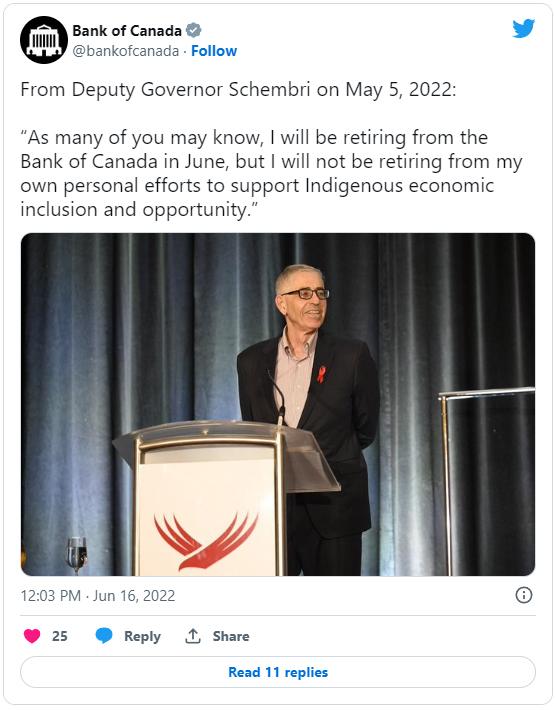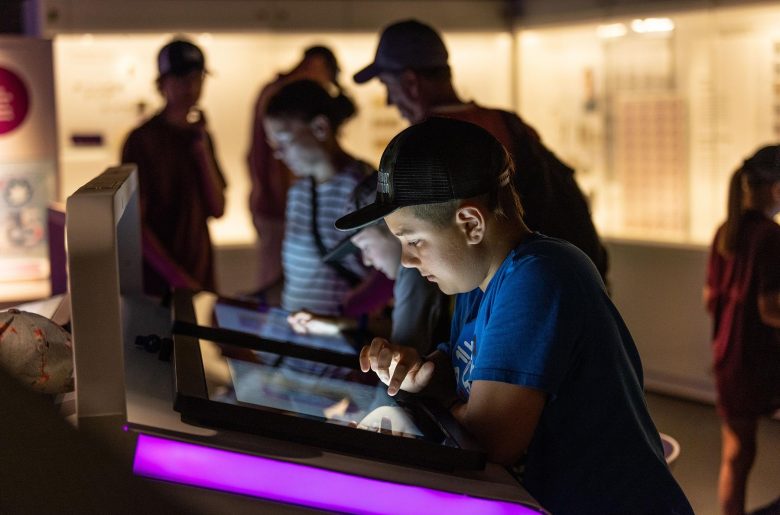
Communications and outreach
The Bank’s communications function faced significant challenges in 2022. Inflation surged well above the Bank’s target of 2%, and Governing Council raised interest rates rapidly in response. Canadians needed to hear directly from the Bank about what it was doing to restore price stability.
Earning and keeping Canadians’ trust is crucial to the Bank. As a public institution, the Bank is accountable to Canadians. Inflation is also more likely to return to target when people understand the actions the Bank is taking to reduce inflation and when they believe those actions will be effective. For both of these reasons, the Bank focused on ensuring its policy actions were always explained in plain, accessible language and on demonstrating how it is accountable to Canadians.
While monetary policy remained top of mind, the Bank continued to engage with Canadians on other topics related to its core functions. These included:
- retail payments supervision
- economic reconciliation with Indigenous Peoples
- central bank digital currency
Reaching Canadians through clear, accessible communications
The Bank is always working to make its communications more accessible. A variety of its publications describe economic concepts and the Bank’s work in simple terms:
These publications saw a surge in readership in 2022, suggesting that they were meeting an important need.
The Bank has applied the same approach to interest rate announcements and long-standing publications, such as the Monetary Policy Report and the Business Outlook Survey. These are written, edited and translated with non-experts in mind, so they deliver important messages in a straightforward manner, keeping technical language to a minimum.
Speeches give members of Governing Council an opportunity to talk about the Bank’s research and analytical work on important topics. In 2022, these topics included:
- what was driving inflation higher
- what the Bank learned from its forecasting mistakes
- how the Bank is conducting monetary policy to restore price stability
The Bank also expanded its presence on social media, including through an #AskTheBoC campaign on Twitter. The campaign, which answered questions Canadians most frequently ask, generated more engagement than the Bank had ever seen before on the social media platform.
Results from public opinion surveys conducted in 2022 show that trust in the Bank is slightly lower than it was before the pandemic due to high inflation and increased criticism. However, survey results also show that more Canadians are aware of the Bank and understand its role in the economy.
Also in 2022, the International Monetary Fund (IMF) conducted a transparency review of the Bank. The IMF concluded that the Bank is “an open, dynamic and transparent public institution” and provided some recommendations on how the Bank could enhance this further.
Charting a path for the future through continued engagement
While focused primarily on bringing inflation back to target, the Bank continued to engage with Canadians on issues that matter for their long-term economic well-being.
When pandemic restrictions were lifted, the Bank resumed in-person engagement and events. Face-to-face meetings are especially important when building relationships, and Bank staff and leaders made efforts to attend in-person engagements across the country. At the same time, the Bank continued to hold virtual and hybrid events, which are generally accessible to more people.
Preparing for retail payments supervision
The Bank continued its outreach with industry and other stakeholders to prepare for the coming into force of its new mandate to supervise retail payments. This outreach included:
- holding meetings of the Retail Payments Advisory Committee
- expanding engagement activities with organizations in the payments sector, including through trade events
- participating in media and public activities
Working toward economic reconciliation with Indigenous Peoples
In 2022, the Bank reaffirmed its commitment to develop an action plan for Indigenous economic reconciliation. Former Deputy Governor Lawrence Schembri outlined this commitment in a speech1 and an interview with the Aboriginal Peoples Television Network.
Meanwhile, the Bank deepened relationships with a variety of Indigenous organizations through meetings and round tables. This included important work initiated with the Tulo Centre of Indigenous Economics to create a virtual Bank of Canada Museum program about Indigenous economies.
Finally, the Bank chaired the Central Bank Network for Indigenous Inclusion, which is adding a critical global perspective on Indigenous economic issues.
From Deputy Governor Schembri on May 5, 2022: “As many of you may know, I will be retiring from the Bank of Canada in June, but I will not be retiring from my own personal efforts to support Indigenous economic inclusion and opportunity.” pic.twitter.com/0J2XikdBJM
— Bank of Canada (@bankofcanada) June 16, 2022
Exploring the potential for a central bank digital currency
The Bank continued to engage with a diverse group of stakeholders to better understand their views on a central bank digital currency (CBDC). This included:
- meeting with financial institutions and civil society organizations to understand how a CBDC could be designed to meet the specific needs of different groups across the country
- running a series of focus groups to better understand how Canadians (including merchants) view the possibility of a CBDC
- participating in speaking engagements to keep various stakeholders informed about key policy and technological research
Reopening the Bank of Canada Museum
The Museum reopened in early May and welcomed more than 27,000 visitors throughout the remainder of 2022. The Museum experience is more accessible than ever thanks to work staff undertook during the pandemic.
The Museum team delivered educational content and programs to Canadians across the country. This included new educational resources as well as online activities for adults and students, such as “Talk to your kids about money.”
Working directly with teachers and students remained a priority. In all, the Museum engaged with more than 1,300 teachers across Canada through training, webinars, conference booths, partnerships and digital channels. In addition, it reached 5,172 students virtually and 780 on-site.
Finally, the Museum launched its Award for Excellence in Teaching Economics. The two winning teachers were from the Yukon and British Columbia.
Looking forward
To ensure it remains a relatable and trusted Canadian institution, the Bank will:
- communicate directly with Canadians to support efforts to restore price stability while continuing to make publications easier to understand
- further expand the reach of its educational content through such vehicles as The Economy, Plain and Simple and explainers, featuring topics of interest to Canadians
- publish a summary of Governing Council’s deliberations after every interest rate decision, as recommended by the IMF
- conduct a broad public consultation to get Canadians’ views on what attributes a CBDC should have and how to ensure it serves everyone
- engage with Indigenous organizations to develop the Bank’s action plan for economic reconciliation
- provide more interactive activities on the Museum’s website, launch a new temporary exhibition called “Money in 10 Questions: Kids Edition” and enhance accessibility by offering Museum tours in American or Quebec sign language
More information
- 1. See L. Schembri, “Economic reconciliation: Supporting a return to Indigenous prosperity” (remarks delivered to the National Aboriginal Capital Corporations Association, Gatineau, Quebec, May 5, 2022).[←]

